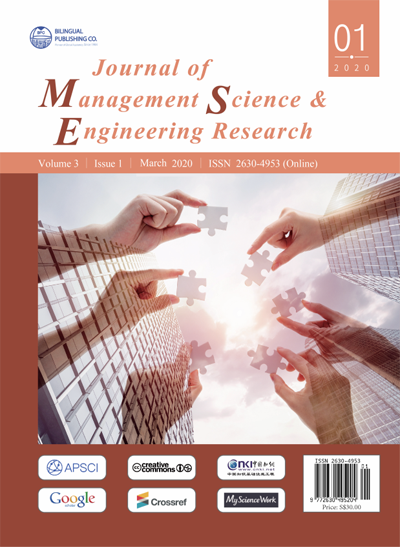-
5450
-
917
-
416
-
397
-
391
Commercial Credit and Corporate Productivity
DOI:
https://doi.org/10.30564/jmser.v3i1.2462Abstract
As an important form of informal finance, commercial credit is widely used among enterprises. Does commercial credit promote the total factor productivity of enterprises? According to the theoretical literature and the reality, using the large sample data of Chinese industrial enterprises, the paper empirically tests the impact of commercial credit on the productivity of enterprises from three aspects: the provision and acquisition of commercial credit and the net commercial credit. The study finds that the provision of commercial credit reduces the productivity level of enterprises; the acquisition of commercial credit fails to promote productivity; while the net commercial credit as a short-term financial buffer for enterprises can alleviate the financing constraints, faced by enterprises, especially private enterprises, which help to increase their productivity levels . In addition, the study found that the higher the marketization process in the region, the more favorable the commercial credit is to the improvement of the production efficiency of private enterprises.
Keywords:
Marketization; Ownership; Performance management; National Bureau of Statistics data; Provision of commercial credit; Access to commercial creditReferences
[1] Schumpeter, J., & Backhaus, U. The Theory of Economic Development. Joseph Alois Schumpeter. Springer US, 2003.
[2] Lin, Y. F., Sun, X. F. Banking Structure and Economic Growth. Frontiers of China’s Economics, 2009(4), 31-45.
[3] Zhang, J., Liu, Y. C., Yan, F. Z., Lu Z. Bank Discrimination, Commercial Credit and Enterprise Development. World Economy, 2013(9): 94-126.
[4] Fisman, R. Trade credit and productive efficiency in developing countries. World Development, 2001, 29(2): 311-321.
[5] Guariglia, A., Mateut, S. Credit channel, trade credit channel, and inventory investment: evidence from a panel of uk firms. Journal of Banking & Finance, 2006, 30(10): 2835-2856.
[6] Yu, H. L. Relationship Network, Commercial Credit Financing and Private Enterprise Growth. Economic Science, 2013, 35(4): 116-128.
[7] Sun, P. Y., Li, F. Y., Gu, L. J. Can commercial credit become an effective financing channel for enterprises-analysis based on investment perspective. Economics (Quarterly), 2014, 13(4): 1637-1652.
[8] Shi, X. J., Z, S. M. Commercial Credit, Financing Constraints and Efficiency Impacts. Economic Research, 2010(1): 102-114.
[9] Fisman, R., Raturi, M. Does competition encourage credit provision? evidence from african trade credit relationships. Review of Economics & Statistics, 2004, 86(1): 345-352.
[10] Gatti, R., Love, I. Does access to credit improve productivity? evidence from bulgaria 1. Economics of Transition, 2008, 16(3): 445-465.
[11] Levinsohn, J., Petrin, A. Estimating production functions using inputs to control for unobservables. Review of Economic Studies, 2003, 70(2): 317-341.
[12] Bougheas, S., Mateut, S., Mizen, P. Corporate trade credit and inventories: new evidence of a trade-off from accounts payable and receivable. Journal of Banking & Finance, 2009, 33(2): 300-307.
[13] Guariglia, A., Liu, X., Song, L. Internal finance and growth: microeconometric evidence on Chinese firms. Journal of Development Economics, 2011, 96(1): 79-94.
[14] Cai, H., Liu, Q. Competition and corporate tax avoidance: evidence from Chinese industrial firms. Economic Journal, 2009, 119(537): 764-795.
[15] Petersen, M. A. Estimating standard errors in finance panel data sets: comparing approaches. Review of Financial Studies, 2009, 22(1): 435-480.
[16] Yu Minggui, Pan Hongbo. Financial development, commercial credit and product market competition. Management World, 2010(8): 117-129.
[17] Danielson, M. G., Scott, J. A. Bank loan availability and trade credit demand. Financial Review, 2004, 39(4): 579-600.
[18] Zhang Jie, Lu Zhe, Zheng Wenping, Chen Zhiyuan. Financing constraints, financing channels and corporate r&d inputs. World Economy, 2012(10): 66-90.




 Tinghua Liu
Tinghua Liu





